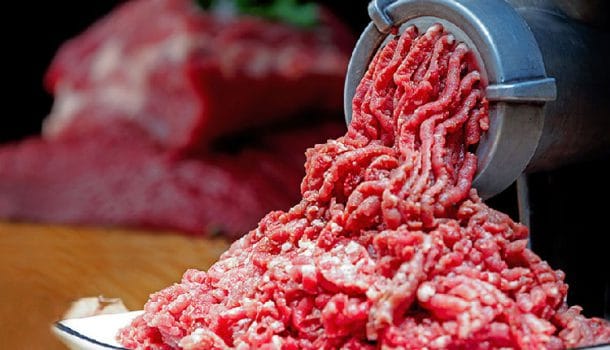The shelf life of a product is the time during which the food maintains its quality characteristics. Bacteria associated with meat spoilage produce unpleasant odors and tastes, discoloration, gas, and slime. There are several overlooked changes that deserve more attention from food business operators and competent authorities.
Rupi slime is a common variation in the surface of cooked meat products packaged with vacuum and modified atmosphere, which causes major economic losses due to the complex needs of the consumer.
In this article, Vira team intends to investigate the factors affecting the spoilage of various types of meat, a discussion that, due to not paying attention to it and not having a proper solution, causes many of these foods to be discarded every year.
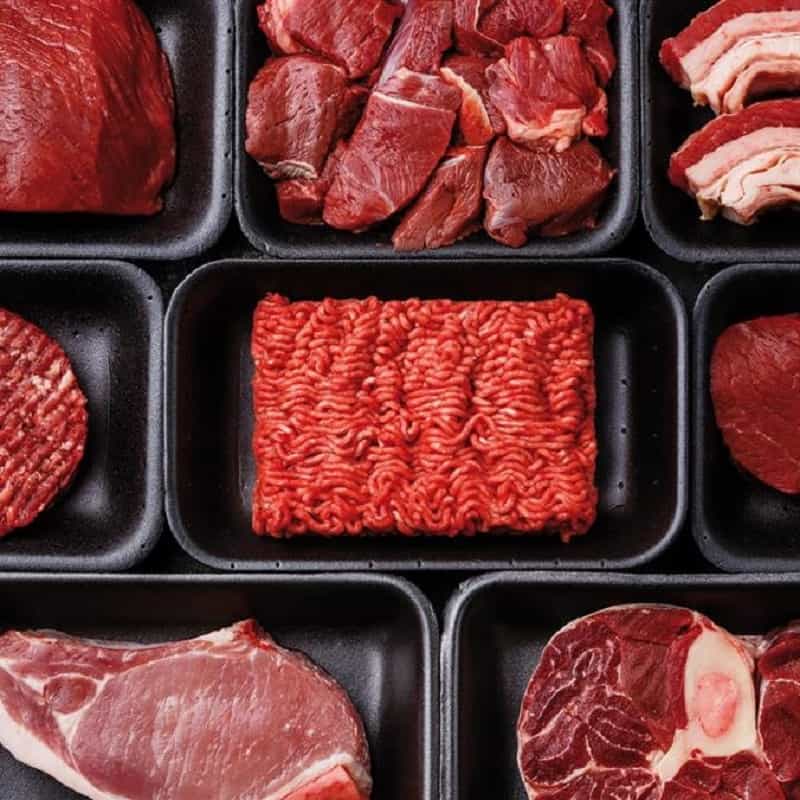
The process of transferring meat from the slaughterhouse to the cold store and storing it
Beef, pork and lamb carcasses are cooled immediately after post-slaughter inspection in the slaughterhouse’s cold room. Since the carcasses are exposed to air, this is an aerobic process. After 24 to 96 hours of chilling, the carcasses are usually taken to the butchering hall, where they are cut into primal cuts called “primals“.
These are usually stored in vacuum packs under anaerobic conditions for up to 6 weeks. Minced meat products can be prepared from deboned pieces or cuts of primary meats after 6 weeks of anaerobic storage. They may then be stored aerobically or anaerobically.
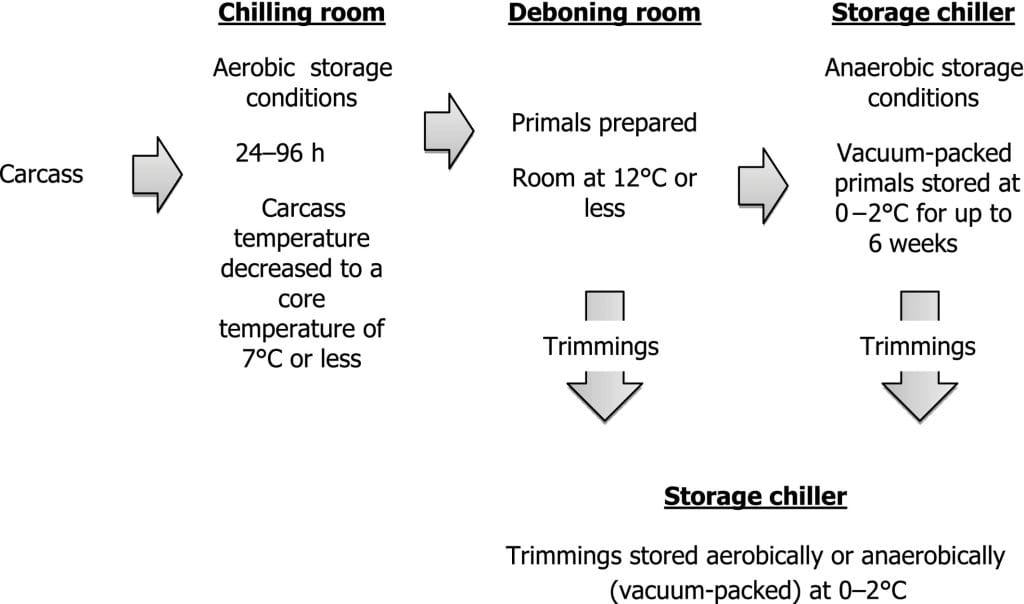
Refrigeration of red meat and poultry is essential to slow the growth of bacteria. It also needs cold for the appearance and quality of eating. Most carcasses are refrigerated using a system based on forced circulation air cooling, although spray cooling may also be used.
Spray cooling is faster than air cooling and works on the same principle as air cooling except that drinking water (instead of air) is cooled on the carcasses before being used as a spray.
It is primarily used in poultry, but may also be used in beef, pork, and lamb processing plants. A more complete review of meat packaging methods is presented in the article “Food Packaging Systems“.
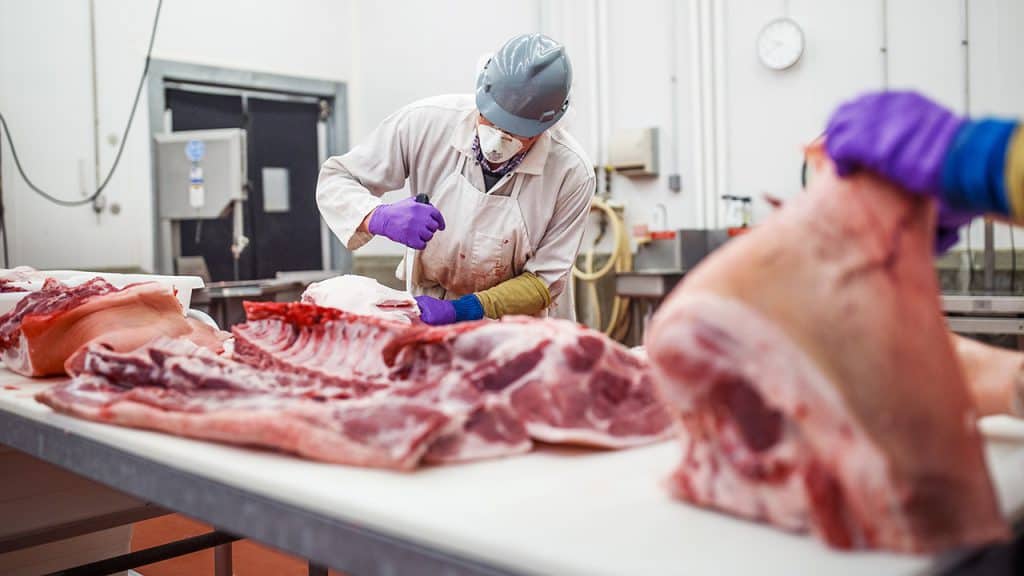
Meat storage regulations to prevent spoilage
Regulation (EC) No. 853/2004 requires that carcasses be chilled immediately after post-mortem inspection to ensure that the meat temperature does not exceed 7°C and for viscera no more than 3°C.
However, there is no regulation on the time limit for reaching this temperature. In addition, beef and lamb carcasses are usually not cooled below 10°C (core temperature) in the first 10 hours to avoid toughening of the meat.
Therefore, bacteria grow on the surface of the carcass until the temperature drops enough to delay bacterial activity.
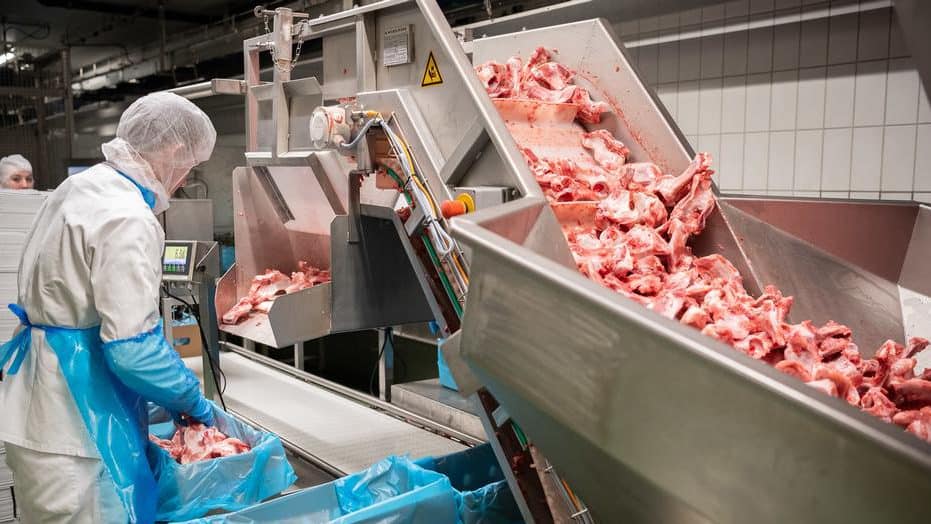
Symptoms of meat spoilage and checking the bacteria affecting it
Meat is spoiling when it develops a discoloration, foul smell, or slime, usually caused by bacteria. For example, Pseudomonas, Lactobacillus and Enterococcus produce slime on meat.
Enterococcus may also cause green hydrogen peroxide staining similar to hydrogen sulfide greening caused by Clostridium species. Bacterial growth in meat is affected by temperature, pH, water activity, nutrient availability, storage space, and competition with other organisms, and slight changes in these factors can have a large effect on spoilage. Although native enzymes may also be involved, their contribution is considered insignificant compared to the performance of bacteria.
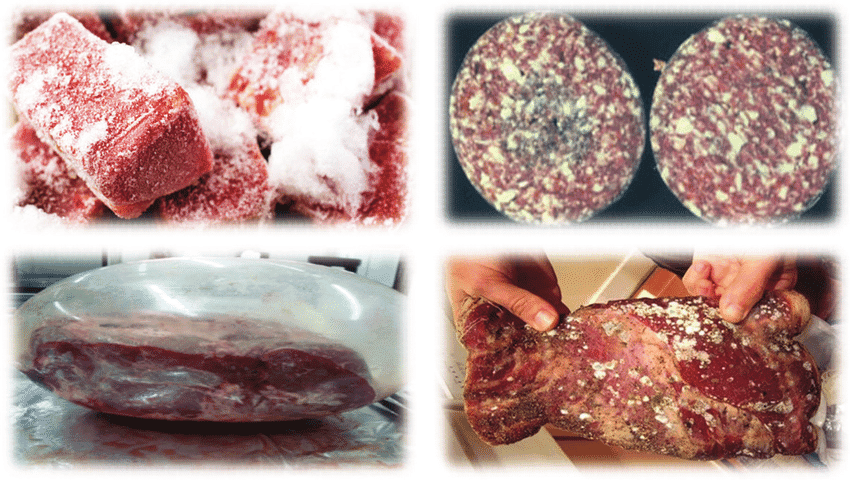
Dominant spoilage genera (and species within a given genus) are determined by storage conditions. Cold storage is chosen for psychrophilic bacteria. Under aerobic conditions, the bacterial spoilage consortium is usually dominated by pseudomonads. Three species of Pseudomonas, Pseudomonas fragi, Pseudomonas fluorescens and Pseudomonas londensis, are the main responsible for slime formation and unpleasant odor, usually when their population reaches 107-108 colony forming units (CFU)/cm2, these symptoms appear.
Enterobacteriaceae, especially cold-resistant species such as Hafnia alvei, Serratia liquefaciens and Pantoea agglomerans, are also commonly found in fresh meat, but rarely cause spoilage unless there is temperature abuse.
Lactic acid bacteria (LAB) and Brochothrix thermosphacta are oxygen-tolerant anaerobes and are commonly detected on cold aerobically stored meats, but with the exception of lamb, they are not considered major spoilage agents.
However, these bacteria are usually meat spoilage organisms stored under anaerobic conditions (eg, vacuum-packed or modified atmosphere). This type of spoilage, which usually occurs when maximum numbers (108 CFU/cm2) are reached, is characterized by souring rather than decay.
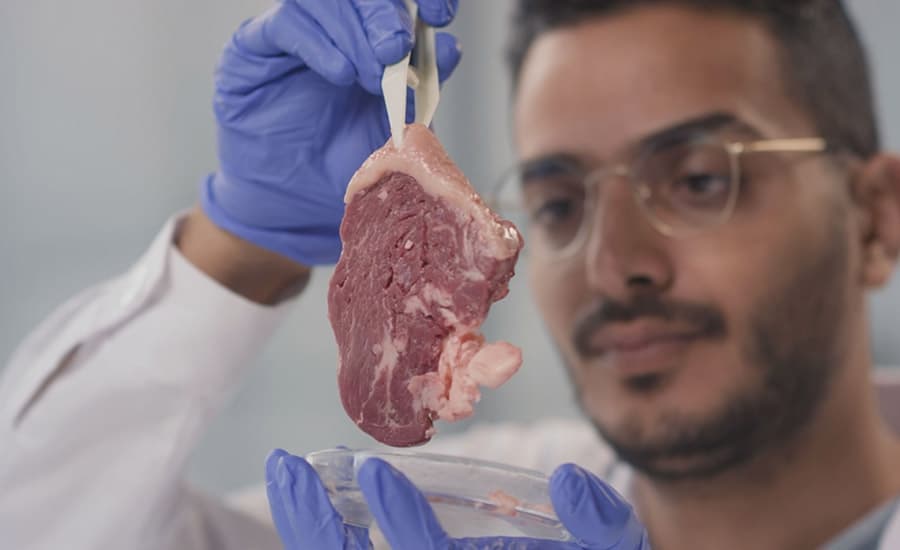
Cold meat stored under anaerobic conditions may also be spoiled by a wide range of Clostridium species. These Clostridium spp. It grows relatively slowly, and spoilage usually occurs in chilled (0–2°C) batches after 4–6 weeks, characterized by a putrid odor (H2S) with a metallic sheen on the flesh or no gas production.
Clostridium algidicarnis, Clostridium frigoris, Clostridium bowmanii, Clostridium frigidicarmis and Clostridium ruminantium are associated with spoilage without gas production, while other species, such as Clostridium estertheticum and Clostridium gasigenes, produce large amounts of carbon dioxide.
In this type of corruption, the packages are inflated and eventually burst. Therefore, this type of corruption is often referred to as “blown package corruption”. Also, the primary factors of deep meat tissue corruption, including bone stain, are among the things that can be mentioned.
Factors affecting meat spoilage
Factors affecting meat spoilage include: Temperature, pH, bacterial activity and water and storage space. During cooling, the surface temperature of the meat carcass changes. Meat is usually stored at a temperature of about 2°C, except for meat transported over long distances where a temperature of -1.5°C is recommended.
Slight changes in temperature can significantly affect shelf life. Therefore, increasing the temperature from -1.5 to 0, 2, or 5 °C decreases the decay time by approximately 70%, 50%, and 30%, respectively.
The pH of muscle at slaughter is approximately 7.0, and the pH decreases from 3.5 to 8.5 within 18 to 40 hours in beef and 6 to 12 hours in pork. In lamb carcasses, this usually occurs within 24 hours.
Dark meat dry (DFD) can occur in all species but is more common in beef. DFD is the result of pre-slaughter stress and reduced glycogen stores below 0.6%, and DFD meat has a pH of 5.9 – 8.6. This higher pH causes the growth of spoilage bacteria.
Fresh meat has a water activity (aw) of approximately 0.99, which decreases to approximately 0.96-0.97 when chilled. Therefore, a wide range of bacteria are able to survive and grow on meat and carcass surfaces.
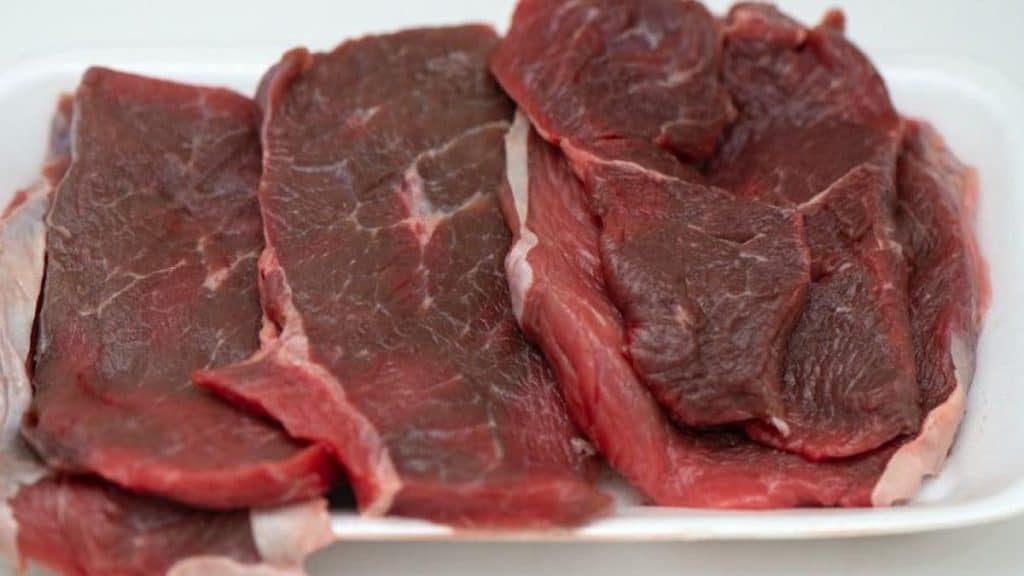
Current requirements to prevent meat spoilage
The current requirement to maintain a cold chain is one of the main principles and essential requirements of the European Union (EU) legislation on food hygiene. Raw materials, intermediate products, and finished products likely to support the growth of pathogenic microorganisms or spoilage bacteria should be kept at temperatures that do not pose a health risk, and the cold chain should not be interrupted.
In the case of meat (including fresh meat, meat products, minced meat), European Union legislation (Regulation (EC) No. 853/2004) sets specific requirements for its storage and transportation regarding temperature and maximum storage time. Such requirements include:
Fresh meat of animals other than poultry:
- Post-mortem inspection should be carried out immediately by chilling in the slaughterhouse to ensure that the whole meat temperature does not exceed 3°C for viscera and 7°C for other meats. However, meat may be cut and boned during chilling in establishments attached to the slaughterhouse.
- With few exceptions, meat must reach these temperatures specified above before shipping and remain at that temperature during shipping.
- The maximum storage time between slaughter and the production of minced meat and meat products in the case of beef and veal with bones and vacuum packed is more than 6 days and a maximum of 15 days from the time of animal slaughter.
Chicken:
- After post-mortem inspection, slaughtered animals must be cooled to a maximum of 4°C as soon as possible, unless the meat is cut while still hot in plants attached to the slaughterhouse.
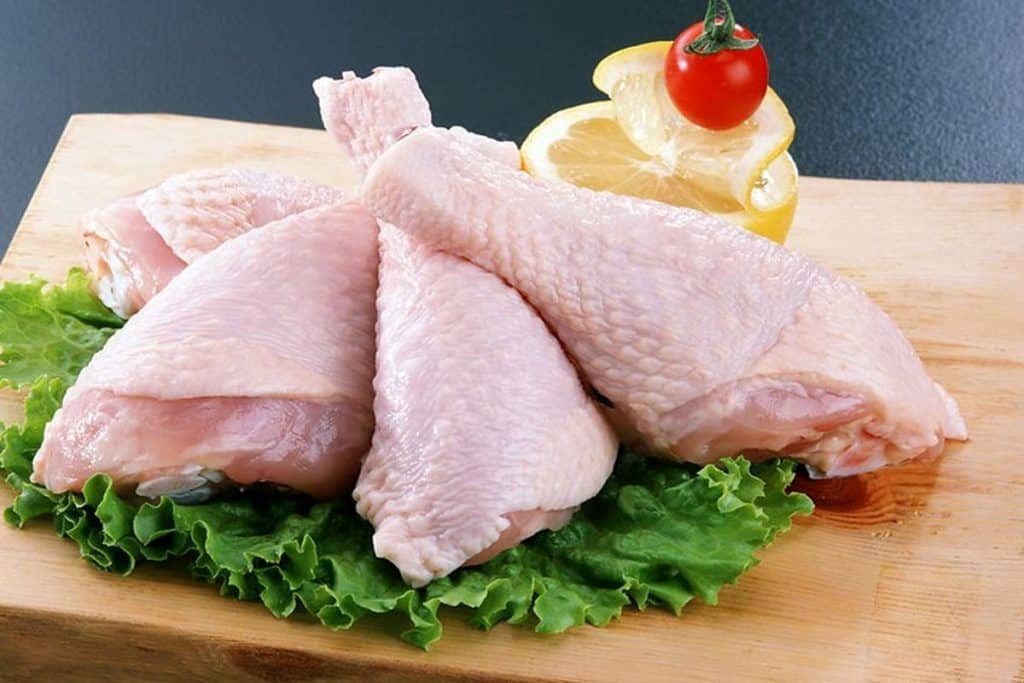
Minced meat, meat preparation:
- The maximum storage time between slaughter and production of minced meat and meat products is not more than 3 days.
- Immediately after production, minced meat and meat products must be packaged and cooled to an internal temperature of no more than 2°C for minced meat and 4°C for meat preparation or frozen to an internal temperature of -18°C.
- Minced meat and meat products must comply with the microbiological criteria laid down in Regulation (EC) No. 2073/20052 regarding Salmonella, aerobic colony count and Escherichia coli.
